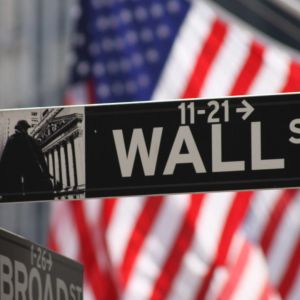Hedge funds are moving almost in sync with the S&P 500, and that is rattling Wall Street. These funds were once seen as protection for pension funds, insurance companies, endowments and family offices. They were meant to give balance to the classic 60/40 mix of equities and bonds. Now they are showing what index provider PivotalPath calls “historically high” correlation to equities. That raises the risk of steep losses if the market turns. The S&P 500 fell for three straight sessions last week as warnings of an AI bubble weighed on traders, and some hedge funds could take a heavy hit in any pullback. Patrick Ghali, co-founder and managing partner at Sussex Partners, said : “People are nervous about where markets are. The market has been driven largely by a handful of AI stocks which by many metrics look frothy. Investors look to their hedge funds to provide them with diversification. But if the market corrects, and their hedge funds corrected in a similar way, that would be problematic.” Event-driven funds track equities at extreme levels PivotalPath’s latest monthly report showed long/short stock-picking funds, event-driven strategies and multi-strategy vehicles all running correlations to stocks far above historical averages. Event-driven funds, which usually focus on merger arbitrage and activist bets tied to corporate M&A, now show a 0.99 correlation to the S&P 500 over 12 months. Their historical mean stands at 0.67. Jon Caplis, CEO of PivotalPath, said: “There hasn’t been a lot of M&A activity until recently, and a strategy like event-driven is dependent much more on merger [arbitrage], so they haven’t been able to take on those idiosyncratic return profiles that come from merger arb or distressed opportunities.” In contrast, global macro funds remain less tied to equities. These funds , which invest across bonds, commodities, currencies and stocks on macroeconomic and geopolitical themes, show a 0.11 correlation to the S&P 500. Caplis said: “Global macro and managed futures are really your diversifier strategies – they’re the ones that tend to make money when markets sell off.” Managed futures, also called trend-following strategies, use quantitative models and algorithms to follow market momentum. In 2022, when the S&P 500 dropped 19% for the year, they gained 20.1%, according to Societe Generale’s CTA indices. But in 2025, they are down 3.4% as of September 25. April’s tariff-driven sell-off and rebound threw their models off balance, cutting into returns. Hedge funds expand reach as volatility concerns grow At the same time, the hedge fund industry is widening its base. Man Group, the largest publicly traded hedge fund firm, said this month it will bring several strategies to an ETF format. BlackRock urged in August that investors raise their hedge fund exposure to more than 5%, the highest level ever suggested by its BlackRock Investment Institute. Globally, hedge funds control about $4.7 trillion in assets, data from Hedge Fund Research shows. With the S&P 500 climbing 15.6% in the past year, many hedge fund strategies have moved in line with broader equities. The ability to generate alpha, the measure of outperformance used to justify higher fees, has been limited during the equity rally. Caplis warned: “It’s not necessarily a red flag, but it’s certainly a yellow flag, and it’s something that investors should learn more about.” Serge Houles, CEO of Tidan Capital, a Stockholm-based multi-strategy quant platform, told CNBC, “Investors are now more aware that there is beta-chasing in some strategies. The idea there is to participate in equity and capture the equity premia, but in a more controlled fashion, while at the same time adding some alpha on top.” Houles also said, “I expect markets to be much more volatile during the final three months of the year. Not necessarily to sell off, but at least to be more sideways as they price in more macro data indicating that the U.S. is potentially in a recession.” If you're reading this, you’re already ahead. Stay there with our newsletter .
 Can Aster price rise again in October?
Can Aster price rise again in October? Pundit: If You Hold XRP, Know This ASAP
Pundit: If You Hold XRP, Know This ASAP











